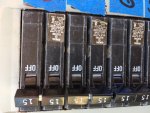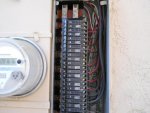I was in the process of approving this post even though the OP has described himself as a DYIer in his profile. The questions in the post relate only to information about an existing installation and do not necessarily involve any attempt to modify it.
If it turns out that the OP wants to know so that changes can be made to the panel, then this thread will be closed with the admonition to bring in a qualified electrician. <never mind, it is closed already>
That said, it appears that the construction of the electrical system of the house uses exclusively what is technically called Multiple Wire Branch Circuits (MWBCs). In this variation of wiring two separate 120V circuits, for at least part of their run, use one hot wire connected to L1 (usually black) and one hot wire connected to L2 (usually red) and a single white neutral wire shared between the two 120V circuits. If both circuits are carrying equal loads there will be no current on the neutral wire, reducing voltage drop from wire resistance, and you also save the expense of one run of copper wire.
The downside of this scheme is that if the electrician turns off only one breaker to work on the associated circuit, the other breaker will still be running current through the shared neutral wire and if he tries to disconnect that neutral he can get zapped by 120V. For this reason the NEC requires the handle tie (the joining bar that you see) so that when he turns off one circuit to work on it, the electrician is forced to turn off the other one too.




